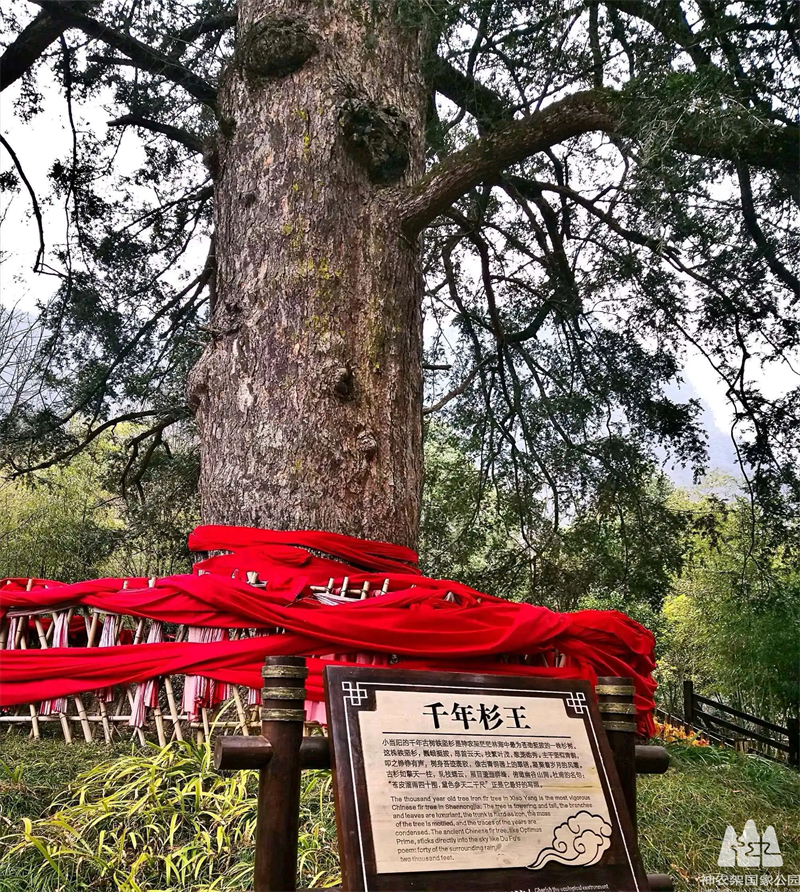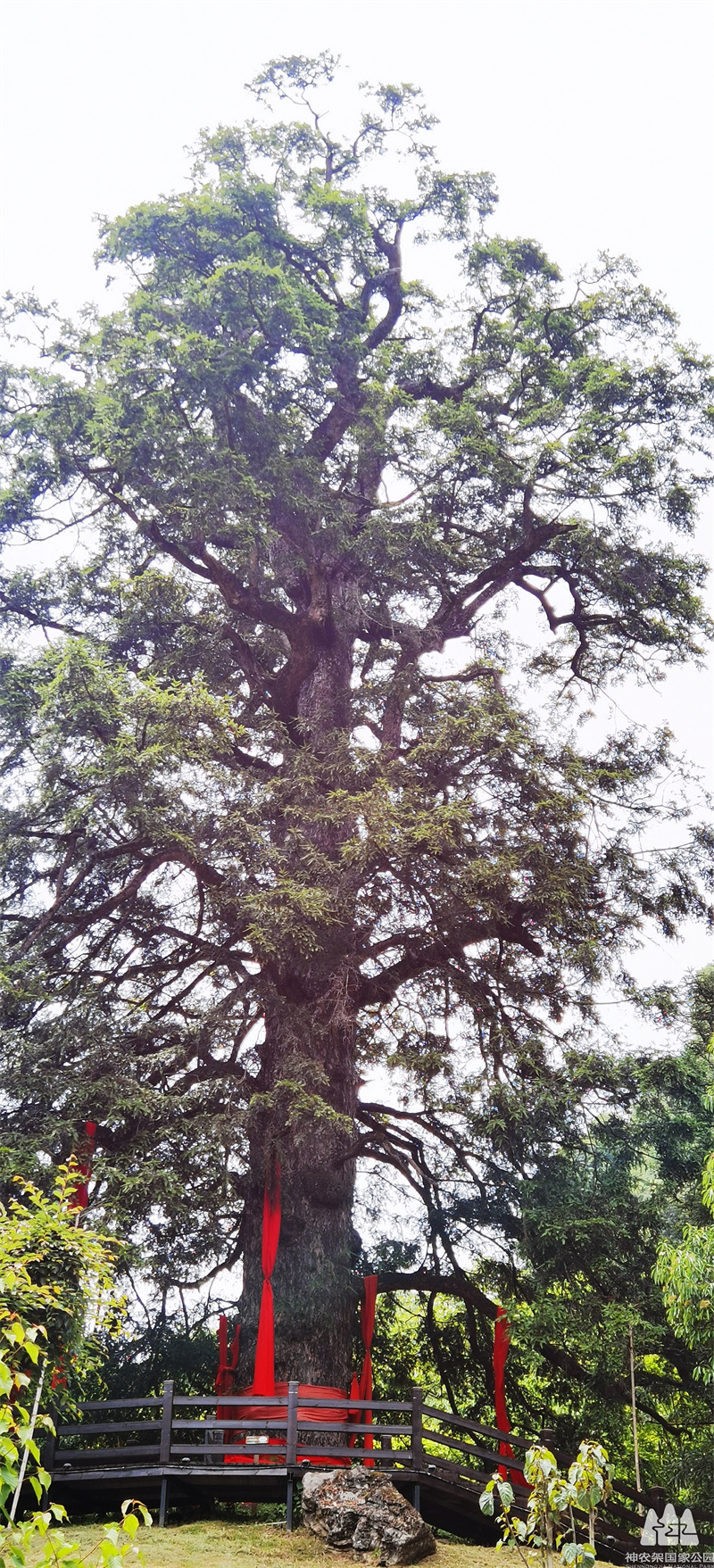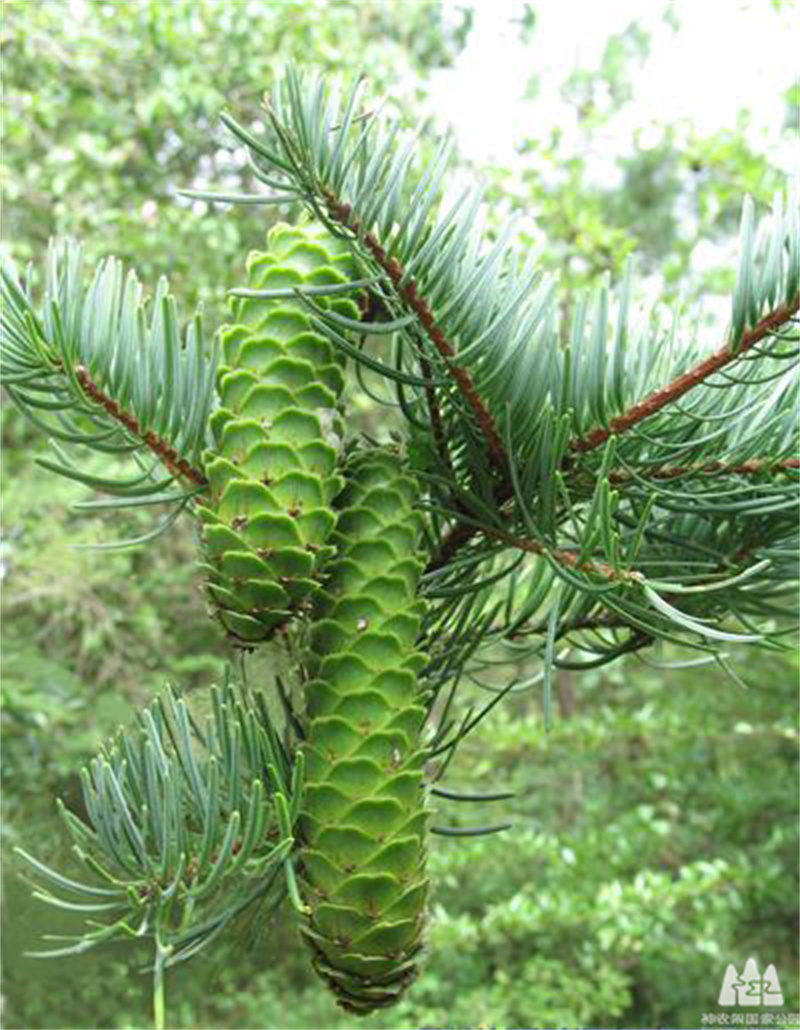Keteleeria davidiana: The Tough Tree
Updated:2024-01-17 Source:ShennongjiaNational Park
In the Shennongtan area in Shennongjia, there is an ancient Keteleeria davidiana with a history of over a thousand years. According to local folklore, a long time ago, a bully living in the mountains saw that this tree was so tall and wanted to use it as his coffin in the future. However, no axe or knife could hurt it. The bully thought this was the tree showing its divine power, and was frightened and fled. No one knows if its Chinese name Tiejian Youshan (meaning “the iron-hard Keteleeria”) comes from this legend.


Keteleeria davidiana is an evergreen tree in genus Keteleeria of the family Pinaceae, and it is an ancient relic plant unique to China. It is a high-quality timber tree with excellent material, tall trunk and rapid growth. Keteleeria davidiana does not have strict environmental requirements. It has mycorrhizal fungi which can improve the soil, and it can root and grow in poor soil or even in rock crevices, vividly interpreting the saying “Upright stands amid green mountains steep. Its toothlike root in broken rock is planted deep. It’s strong and firm though struck and beaten without rest. Careless of the wind from north or south, east or west.”
Keteleeria davidiana, whose Chinese name infers that it’s a kind of fir trees, does not belong to the family Taxodiaceae. Neither do Keteleeria or Tsuga, whose Chinese names infer the same. Moreover, Sciadopitys verticillate, who is also called umbrella pine, does not belong to the family Pinaceae. As the only species in the genus Sciadopitys of the family Taxodiaceae, Sciadopitys verticillate is native to Japan, and was introduced to China as a garden ornamental tree. We can only blame those who named it for this confusion. There are similar instances of the same species having different names, or different species having the same name, which can easily lead to misunderstandings during communication. Therefore, when naming a species, we need an internationally recognized name, that is, a Latin name. A Latin name generally consists of three parts: the genus, the specific epithet, and the name of the person who named it.

A unique genus in East Asia, Keteleeria is more evolved within the Pinaceae. Keteleeria are mainly found in China, especially in the southwestern and central parts of the country. They are very likely to have originated in the southwest of China and then spread to the east. All the species and varieties of Keteleeria can be found in a lot of different areas, except for Keteleeria hainanensis, which can only be found in Hainan Province, and Keteleeria davidiana var. formosana Hayata, which can only be found in Taiwan Province. The most cold-resistant species in the genus, Keteleeria davidiana is distributed further north, with its northernmost habitat reaching the southern slope of the Qinling Mountains, making it the northernmost distributed species in the genus.
A typical Pinaceae plant, Keteleeria davidiana is wind-pollinated. The male cones bloom intensively for a few days and rely on a large amount of pollen to pollinate the female cones. However, it is easily affected by the weather. If the wind is weak or it rains during the male cone blooming period, the pollination rate of the female cones will be greatly reduced. The seeds of Keteleeria davidiana are rich in oil, and some animals that feed on its seeds can help spread them. The seeds also have well-developed seed wings, which can help them travel to a distant land, take root, reproduce, and complete the next cycle of life.
Species Profile:
Keteleeria davidiana
Keteleeria
Pinaceae
Pinales
Features:
Trees, up to 50 meters tall, with diameters at breast height of up to 2.5 meters. The bark is dark gray, deeply and longitudinally furrowed, and the crown is broad and round. The leaves are linear, flattened, with raised midribs on both sides, arranged in two rows on lateral branches. The cones are cylindrical, 8-21 cm long, 3.5-6 cm in diameter, with the upper margin of the seed scales slightly turned outward when mature. The seeds are elongated. Flowering occurs from March to April, and the seeds mature from October to November.
Distribution in China:
Gansu, Shaanxi, Sichuan, Hubei, Hunan and Guizhou.
Copyright Shennongjia National Park
Address:36 Chulin Road, Muyu Town, Shennongjia Forestry District, Hubei Province 鄂ICP备18005077号-3
Address:36 Chulin Road, Muyu Town, Shennongjia Forestry District, Hubei Province 鄂ICP备18005077号-3
Email:2673990569@qq.com
Phone:0719-3453368
Phone:0719-3453368


TOP

